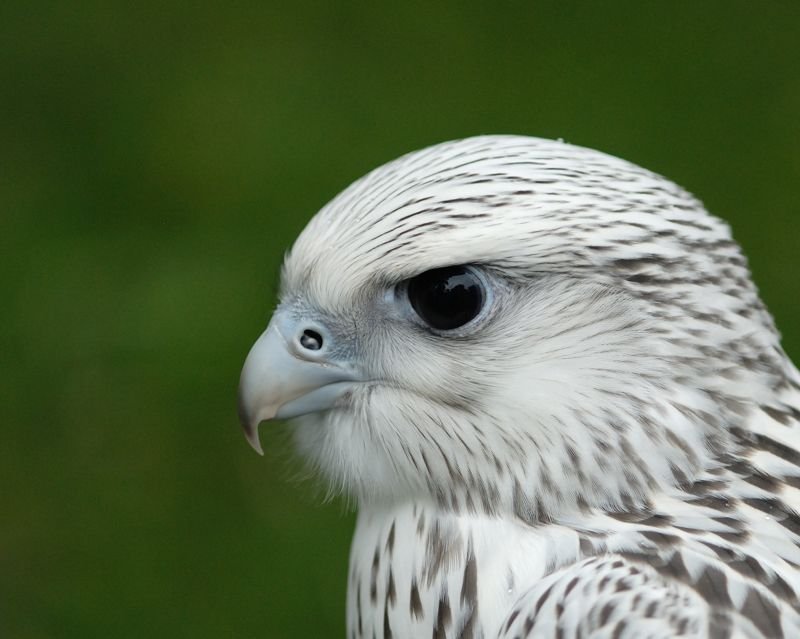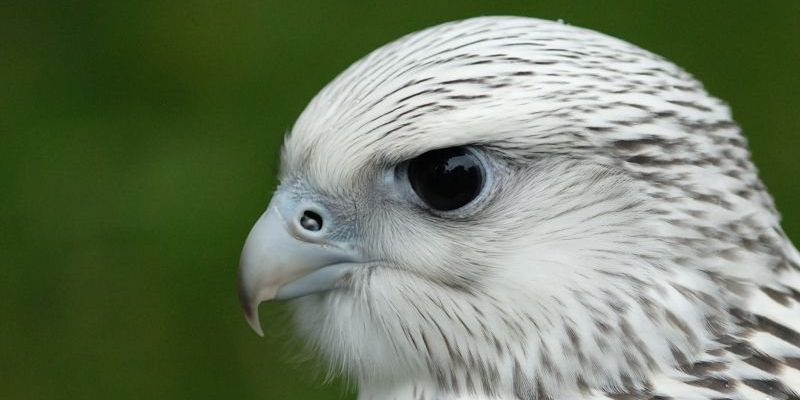
Now, you might be wondering what to do if you actually encounter one. Let’s break it down together, just like we would over a cup of coffee. First off, knowing what to do can enhance your experience and ensure both your safety and the bird’s well-being. From recognizing its behavior to understanding how to appreciate its beauty from a distance, I’m here to guide you through this exciting moment.
Recognizing a Gyrfalcon
Before you can figure out what to do, it helps to know what a gyrfalcon looks like. These birds are the largest of all falcons, and they can range in color from pure white to a dark gray or even brown. Think of them as the “great white shark” of the bird world—impressive and captivating.
You might spot a gyrfalcon in various habitats, but they primarily thrive in the Arctic regions, often nesting on cliffs. Their wingspan can reach up to 4 feet, and they have a robust build. Keep an eye out for their powerful beaks and sharp talons; these features make them formidable hunters.
If you see one, take a moment to observe its behavior. Gyrfalcons are known for their incredible hunting skills, often hunting in open areas. If it’s perched on a rock or soaring above, this is your chance to appreciate its beauty without getting too close.
Stay Calm and Observe
So, you’ve spotted a gyrfalcon—now what? The first thing to remember is to stay calm. Birds can sense your energy, and if you’re anxious, they might feel threatened and fly away. Instead, let’s channel that excitement into simply observing.
Find a good spot to sit or stand, and do your best to blend into your surroundings. Use binoculars if you have them. This will let you appreciate its beauty from a distance while avoiding any sudden movements. Honestly, being patient is key here. You might be surprised at how long a gyrfalcon will stick around if you give it the space it needs.
As you watch, take note of its behavior. Is it hunting? Perched quietly? Engaging in courtship displays? Each action tells a story about its daily life. Feel free to jot down your observations if you’re into birdwatching—as you dive deeper, you might find yourself wanting to learn more about gyrfalcons and their habits!
Keep Your Distance
It’s so tempting to want to get closer for a better photo, but here’s the thing: keeping a respectful distance is essential. Gyrfalcons are wild animals, and getting too close can stress them out. Remember, you’re a guest in their territory.
A good rule of thumb is to stay at least 300 feet away, especially if you see a bird that appears to be nesting or feeding. Not only does this help keep the bird calm, but it also protects you. Wild birds can act unpredictably if they feel threatened, and you never want to put yourself in harm’s way.
If you do want a closer look, consider using a camera with a zoom lens. This way, you can capture stunning images while respecting the gyrfalcon’s space. Plus, it gives you a chance to share the beauty of these birds without disturbing their natural behaviors.
Educate Yourself About Their Behavior
Understanding gyrfalcon behavior can enhance your experience even further. For example, did you know that these birds are highly social during breeding season? Male gyrfalcons often perform aerial displays to impress their mates, which can be a thrilling sight to witness!
Watching how they communicate through body language can also be fascinating. You might notice that they have specific calls or physical postures that indicate different moods or intentions. Engaging with a birdwatching community or reading up on gyrfalcons can give you deeper insights, turning a casual encounter into a rich learning experience.
Also, if you see a gyrfalcon in a group, pay attention to how they interact. Are they flying together or perched close? These interactions can reveal a lot about their social structure and habits.
Leave No Trace
As much as you might want to share your amazing encounter with friends or on social media, it’s crucial to follow the principle of “leave no trace.” This means that you should leave the environment as you found it—without any signs of your presence.
Avoid leaving trash behind, and don’t disturb the natural habitat. If you’re hiking in a designated area or national park, be sure to follow all park rules regarding wildlife encounters. Disturbing nests or approaching too closely can not only harm the birds but also put you at risk for fines or legal issues.
Also, if you’re tempted to feed the bird, resist the urge! Feeding wildlife can disrupt their natural foraging behaviors, making them reliant on human-provided food, which isn’t healthy for them in the long run. Enjoy your encounter, but let nature remain wild.
Share Your Experience Sensibly
After your encounter with the gyrfalcon, you might feel inspired to share your experience with others. Whether you’re posting on social media or telling friends about your adventure, think about how you can spread awareness about these magnificent birds.
You could share fun facts, highlight their conservation status, or encourage responsible birdwatching. The more people know about these incredible creatures, the more likely they are to appreciate and protect them. And who knows? Your stories might inspire someone else to venture out and discover the beauty of nature too.
Just remember to encourage others to follow the same respectful habits you practiced during your encounter. Remind them to observe from a distance, keep the environment clean, and cherish what they see without interfering.
Encountering a gyrfalcon in the wild is truly a special experience. The beauty and grace of these birds can leave you feeling awe-inspired and grateful to have witnessed such a magnificent creature. By knowing how to observe them respectfully and responsibly, you can ensure that both you and the gyrfalcon have a positive experience.
So next time you find yourself in the wild, keep an eye out for these remarkable birds. Who knows what incredible moments await you? Just remember to enjoy the journey, respect their space, and let the beauty of nature take your breath away. Happy birdwatching!

